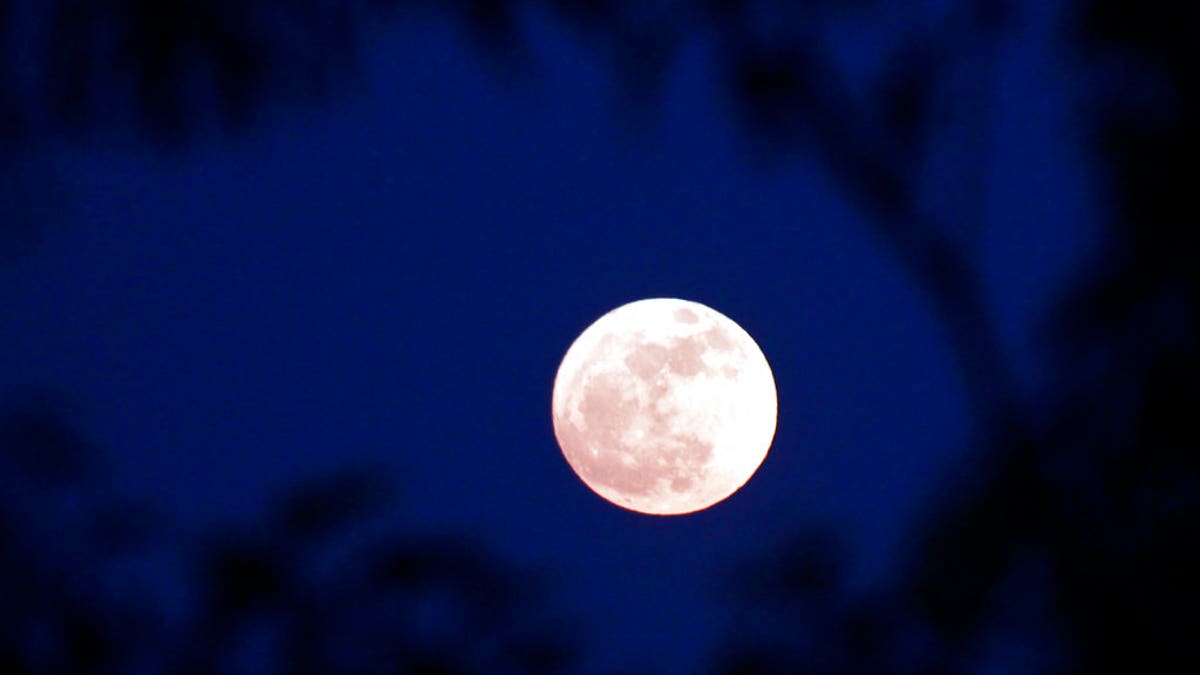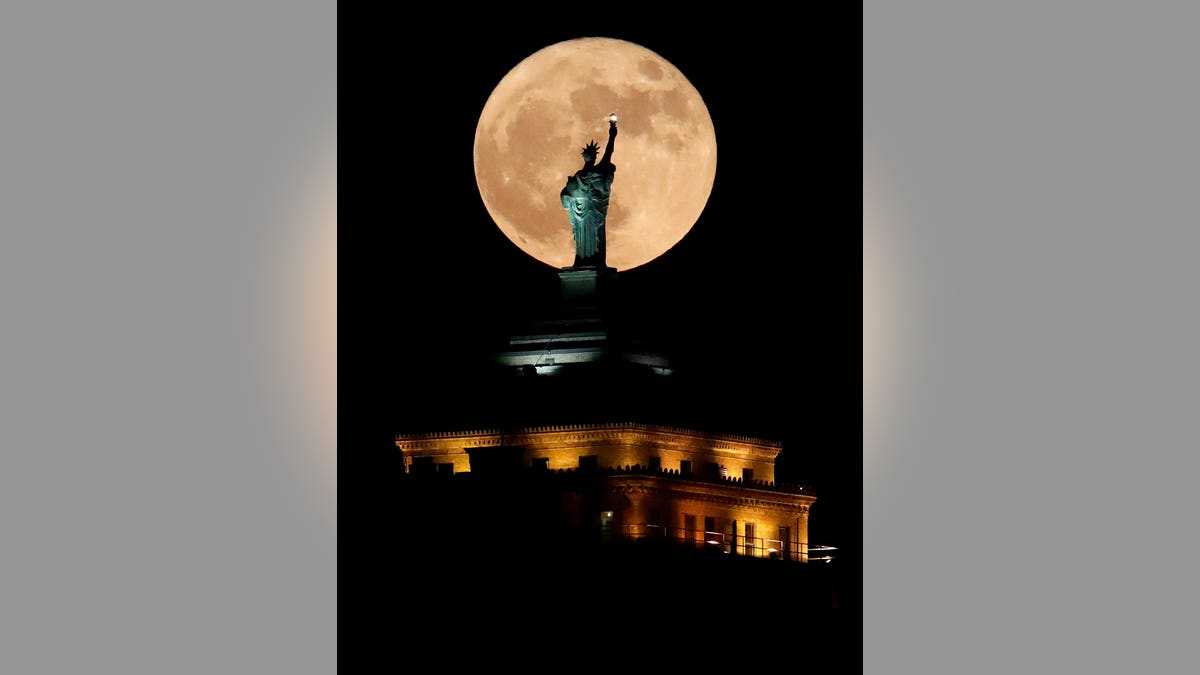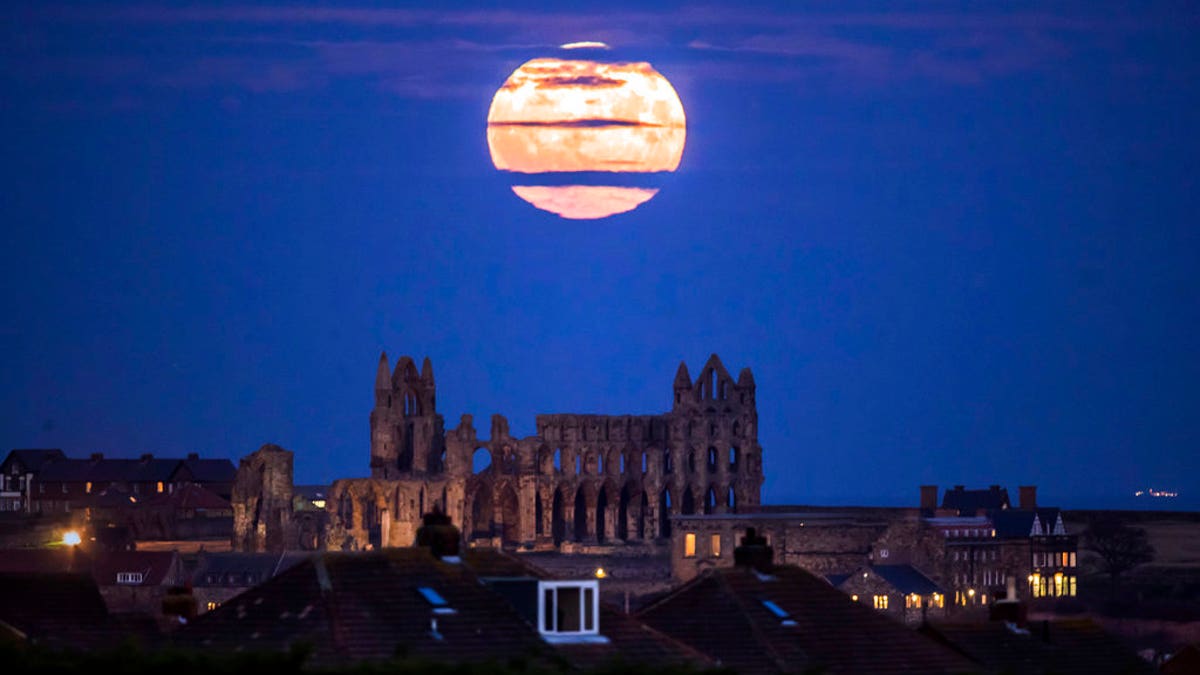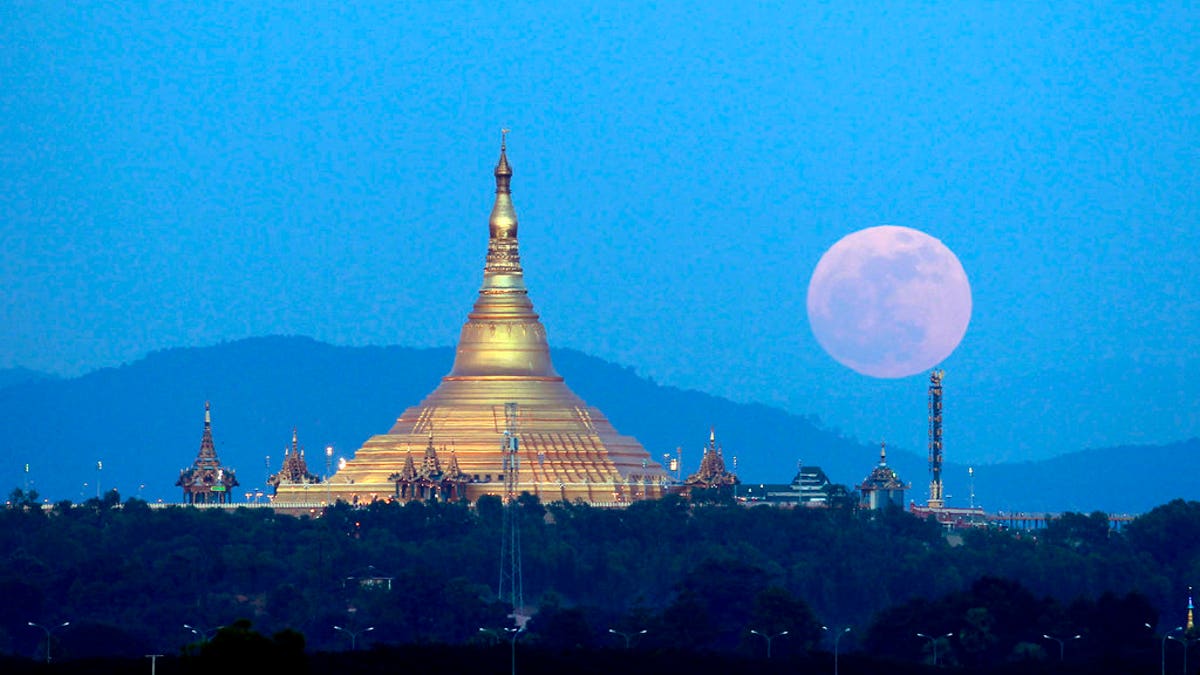
The Supermoon seen from Naypyitaw, Burma, on Sunday. (AP Photo/Aung Shine Oo)
A “supermoon” was visible across much of the planet on Sunday evening for the one and only time in 2017.
The supermoon, given its name by Astrologer Richard Nolle, is a new or full moon that appears bigger to the human eye because it’s the closest distance it could get to Earth during a given orbit.
“The supermoons are a great opportunity for people to start looking at the moon, not just that once but every chance they have!” said Dr. Noah Petro, a research scientist from NASA’s Goddard Space Flight Center.

The supermoon rises in front of a replica of the Statue of Liberty sitting atop the Liberty Building in downtown Buffalo, N.Y., on Sunday. (AP Photo/Julio Cortez)
Supermoons typically appear 14 percent larger and 30 percent brighter than the average moon seen in the sky each night, Petro told Fox News.
SLIDESHOW: PHOTOS OF THE SUPERMOON FROM AROUND THE WORLD

The supermoon rises above Whitby Abbey in Whitby, northeast England, on Sunday. (Danny Lawson/PA via AP)
While it may seem bigger, it’s simply close to the horizon, according to Space.com. The effect is called a “moon illusion,” which scientists believe may be the human brain comparing the moon to other objects nearby.
Or it could be that the human brain “is just wired to process things on the horizon as bigger than things in the sky.”

The moon rises behind the mountain range seen from Naypyitaw, Burma, on Sunday. (AP Photo/Aung Shine Oo)
This particular moon, according to NASA, has been given the Indian names of “Frost Moon” or the “Moon Before Yule,” because it’s the last full moon of the fall season.
The moon, which also has been dubbed a “full cold moon,” is one part of what NASA is calling a “super moon trilogy.”
The next supermoon will be on Jan. 1, 2018, with the third taking place on Jan. 31 — which NASA says “will be extra special,” considering it will feature a total lunar eclipse.
Fox News' Zoe Szathmary contributed to this report.
